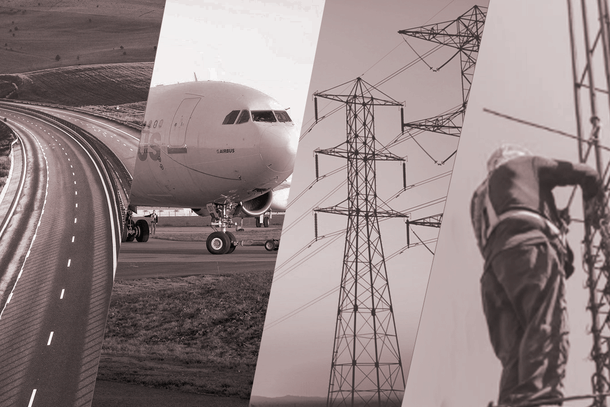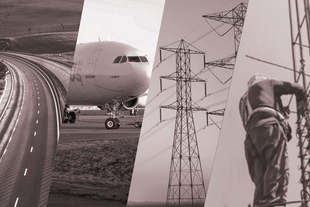Analysis
In Charts: How The ₹6 Trillion National Monetisation Pipeline Will Help Address Funding Gaps In ₹111 Trillion National Infrastructure Pipeline
Swarajya Staff
Aug 24, 2021, 03:13 PM | Updated 03:13 PM IST
Save & read from anywhere!
Bookmark stories for easy access on any device or the Swarajya app.


National Infrastructure Pipeline
In the 2019 Independence Day speech made by Prime Minister Narendra Modi, a key announcement was investment of ₹100 lakh crore (100 Trillion) in infrastructure over the next five years.
This was also one of the promises made in the Bharatiya Janata Party (BJP) manifesto for the Lok Sabha elections held in April and May 2019.
Following the announcement by the PM, a task force was constituted within the Finance Ministry to create a roadmap for this investment.
Officials from the Departments of Economic Affairs and Expenditure in the Finance Ministry and NITI Aayog were part of this task force.
The report of this task force was first presented on 31 December 2019 by Finance Minister Nirmala Sitharaman. This report, called the National Infrastructure Pipeline (NIP), distilled the sectoral investment plans and outlines a specific mission to achieve through this investment.
The Task Force on NIP submitted its final Report on NIP for FY 2019-25' to the Union Minister for Finance Nirmala Sitharaman in April 2020. The final report projected total infrastructure investment of above ₹111 lakh crore (111 trillion), a slight upward revision from an earlier estimate of ₹100 lakh crore)
Out of ₹111 lakh crore identified as part of NIP pipeline, 4 sectors make up the bulk of projected spend – energy (24%), roads (18%), urban (17%) and railways (12%) amount to 71% of the projected infrastructure investments in India.
Out of total expected capital expenditure of ₹111 lakh crore, the report noted that projects worth ₹44 lakh crore (40% of NIP) are under implementation, projects worth ₹33 lakh crore (30%) are at the conceptual stage and those worth ₹22 lakh crore (20%) are under development.
The report also identified facilitating design, development and maintenance of public infrastructure as per global standards a priority for national infrastructure. The report also calls out the need for enabling regulatory and administrative reforms to achieve the NIP ambition.
Roads, Railways, Ports And Airports
NIP estimates that ₹ 36.66 lakh crore (36.66 trillion) will be invested to build new infrastructure n roads, railway, port and airport sectors.
The vision for Railways includes healthy private sector participation with targets of 30 per cent net cargo volumes, 500 private passenger trains and 30 per cent of 750 stations privatised.
The railways will also source rolling stock from the private sector. The two dedicated freight corridors (DFCs) will be fully operational, while the construction of East-West, North-South, East Coast, and South-West DFCs will be underway – presumably part of the NIP plans.
Railways also expects to electrify 100 per cent of its network. 14 per cent of the total investments are earmarked for Railways.
Around 19 per cent of the investments will be channelised to road sector. The target is to add 50 per cent total length to the existing National Highways, with 12x more Expressways constructed.
Given that the Bharatmala project has already identified some ambitious projects, the target looks attainable.
Additionally, the ownership of roads will tilt in favour of asset aggregators and financial investors as opposed to the public authorities today.
Energy And Power
India aims to take the current installed power capacity of 356 GW to 619 GW in the NIP period. The share of thermal installations is expected to go down from 66 per cent to 50 per cent.
The investments earmarked for nuclear power are interesting – with more than Rs. 1.5 lakh crore investment planned for nuclear power, India can easily add up to 15 GW in this space incrementally.
The NIP categorically calls for open access in distribution, regular tariff revisions and extensive metering using smart meters. Energy sector will get about 24 per cent of the total investments.
Urban and Housing
This is a big focus area for showcase projects, given that urbanisation has been identified as the primary driver of NIP. About 16 per cent of the NIP investments will go towards improving urban infrastructure and running housing programmes.
The government aims to cover 100 per cent urban and rural households with piped water supply. 100 per cent of all municipal waste is expected to be treated. More than 25 cities will get operational metro projects. Affordable housing projects will continue to remain in focus.
Social and Rural Infrastructure
The NIP takes a broad view of what’s included in infrastructure development. Social infrastructure areas including higher education, school education, health and family welfare, sports and tourism are specifically called out.
Funding The National Infrastructure Pipeline And Need For National Monetisation Pipeline
The NIP is being funded through multiple sources. About 18-20% of the pipeline is expected to be financed through the Centre’s budget; About 24-26% is expected to be financed through the state’s budget; ~31% would be raised through debt from bond markets, banks and NBFCs; equity from private developers, external aid multilateral and bilateral agencies and internal accruals of PSUs would comprise 4–10%.
The existing sources would be able to finance 83–85% of the capital expenditure to be incurred between fiscals 2020 and 2025.
Some proportion of the financing gap can be filled through establishing new Development Finance Institutions (DFIs) and using asset monetisation as a tool to monetise operational assets at both central and state levels
The Union finance minister announced the introduction of a Bill to set up a Development Finance Institution (DFI) capitalised to the extent of ₹20,000 crore. “The ambition is to have a lending portfolio of at least ₹5 lakh crore for this DFI in three years,” the finance minister said in her speech. The bill has already been passed in both houses of parliament.
The DFI, to be called National Bank for Financing Infrastructure and Development (NaBFID), would seek to raise funds from global pension and insurance sectors for investment in new projects, carrying certain tax benefits
While traditional sources of capital are expected to finance 83–85% of the ₹111 lakh infrastructure expenditure committed under the National Infrastructure Pipeline (NIP) over five years, around 5.4% of the total NIP funding is expected to be mopped up through asset monetisation.
The asset monetisation will be driven by National Monetisation Pipeline (NMP) that was unveiled by the Union Finance Minister yesterday (Aug 23).It comprises of brownfield assets nearly worth ₹6 lakh crores belonging to central ministries and public sector entities that will be earmarked for monetisation between 2021-22 and 2024-25.
"By bringing in private participation, we are going to monetise it (assets) better and with whatever resource that you obtained by monetisation, you are able to put in for further investment into infrastructure building," FM Nirmala Sitharaman said. She added that the NMP will help improve liquidity to increase expenditure in infrastructure by the government.
NMP lists sector-wise brownfield assets with an aggregate monetisation potential of ₹6 lakh crore, which will be available for lease/licensing to private investors over four years, from FY 2022 to FY 2025. For the current fiscal, the target is ₹88,000 crore
(Inputs and Contribution-Aashish Chandorkar )





